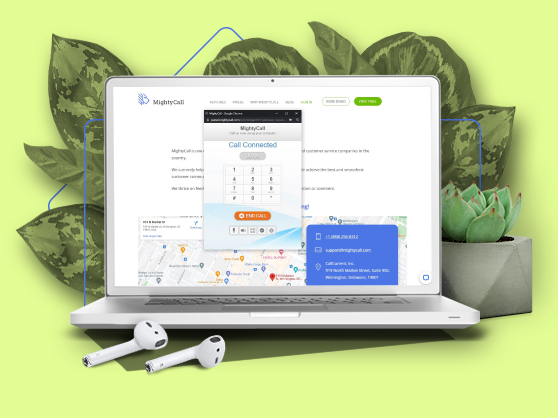You can shoot a gun for as long as you like, but you won’t hit your target if you don’t know what it is. A marketing plan is the list of targets — or goals — for promoting and growing a business. In other words, if you don’t have a marketing plan, you’re more or less firing at random. Like any other business, a restaurant needs a plan. You need to know who your customers are, what will attract new ones and how much all this will cost. And you need to stick to your guns, so to speak. We outline a few tips for creating an excellent marketing plan for a restaurant.
Leading American marketing expert Philip Kotler says: “Marketing is not the art of finding clever ways to dispose of what you make. It is the art of creating genuine customer value.”
While plunging into day-to-day operations management, a restaurateur should never forget about marketing. The success of the place totally depends on its awareness. But besides well-targeted promotions and advertising, an establishment needs to boast. A marketing plan is a guideline for the whole team to provide the most sought-after services and efforts.
What is a marketing plan?
A marketing plan can be part of an overall business plan and should be revised every year. This written document includes benchmarking of a field situation, competitive landscape statement, marketing and advertising ideas for the coming year, target audience, and enterprise goals.
The following bullets are some of the fundamental marketing plan elements:
- Goals: Should be realistic and measurable for easy performance evaluation.If it’s an increase in patronage, then verify the expected growth percentage. If you want to develop a catering service, then point out sub-goals for quarters: service coverage definition, measured promos, targeted profit.
- Market research: Information about market dynamics, basic data analysis (sales volume, weak periods, customer characteristics etc.).
- Target audience: Though you’d like to see all social groups at your place, let’s face it: you’d better focus on a few. Create a profile of your consumers: age, gender, demographic, line of activity. If they are mostly businesspeople, consider informing them about your business lunches, take-outs, and catering options. For students, think about money-saving combos. Define criteria for each target group — then you can invent a seductive offer especially for them.
- Competition: One of the most challenging steps is to identify traits to stand out you’re your competitors. After a peer review, the business owner needs to indicate the restaurant’s features and steps towards its realization. If a restaurant at the corner of the street has main courses similar to yours, make a promo that heightens your cocktail list. If your clients come with kids, make your place extremely comfortable for the little guests — and let everybody know about it.
- Strategies: This section is the bulkiest. It describes tactics for each goal’s realization, including advertising, social media promotion, website management, direct marketing, training programs, events hosting etc. The steps should be scheduled and followed through.
- Budget: All marketing efforts should be within the budget. An amount for the activities needs to be diverted at the beginning of marketing planning. Include the breakdown of each tactic costs. This is very convenient for adjustments in case of the funding overspend. You may amend activities, reschedule their realization to finalize the budget. For example, if you want to give a charity dinner for lonely elderly people on Thanksgiving Day, include costs of advertising that will reach the target audience, compensation for additional staff to help seniors, decorations, and some floor show.
Every plan should be based on the desired future point for the restaurant: new customers, profit increase in figures, franchise sales, location extension and others.
Start with a team discussion
A brainstorming meeting is an excellent start for marketing planning. Ask the key managers, decision-makers and proactive persons of your team to join your session and discuss present and future position of your restaurant.
The idea is to gather a list of spontaneous thoughts contributed by all members. The session should be comfortable for everyone, so no one will feel awkward while sharing their opinion. Write everything down, even if something seems irrelevant at first sight.
Here are some questions to encourage team to brainstorm:
- What is our greatest feature?
- What can we improve?
- What is the key theme of the restaurant?
- Who is our customer?
- Who would we like to attract?
- How do we see our restaurant in 3 years?
Use analytics tools
Marketers often use specific concepts to identify company’s and customers’ needs and attach priorities to following steps. Two of the most popular approaches are the “4Ps” and the SWOT models.
4Ps stand for Price, Product, Promotion, and Place. The model is perfect for identifying an initial image of advertising campaigns. It is also useful for revision of the current marketing plan. The point is to define major strategic elements of the restaurant. Today marketing experts often add +1P for People. That means a permanent focus on customers’ needs. Once again let’s heed the words of marketing thought leader Philip Kotler “Every business is a service business. Does your service put a smile on the customer’s face?”
The acronym SWOT stands for Strengths, Weaknesses, Opportunities, and Threats. First two are internal factors, while the second two are external. A SWOT diagram shows all helpful and harmful factors in clear and simple form. For example, your restaurant’s main internal strength is a unique concept, while your weakness is higher costs because of that concept. Your opportunities could be attract fashionistas and young people. While threats are changing market tastes. SWOT chart can be prepared both for a big picture and particular operations.
Each idea from the brainstorming session can be studied using these 2 tools. This help to choose the points to include into the restaurant’s marketing main document.
If you’re still hesitant about how to start, look for inspiration with a restaurant marketing plan example at mplans.com.
Planning is essential for business management. And written statement for marketing provides focus on leads and good openings. Don’t be intimidated by paperwork, you will be in it soon as your own marketing strategist!


























